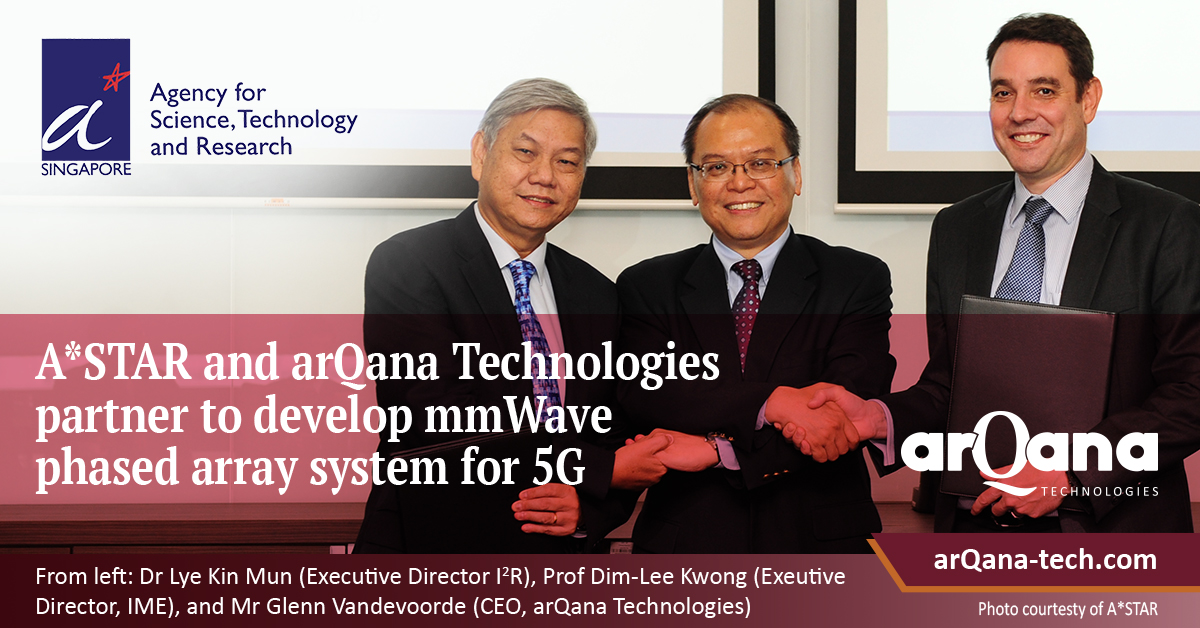A*STAR and arQana Jointly Develop mmWave Phased Array System for the 5G Cellular Market
A*STAR and arQana Technologies have entered a Master Research Collaboration Agreement to jointly develop capabilities in mmWave Phased Array System for 5G cellular infrastructure, drone detection radar, and satellite communication on the move (SOTM).
The three-year collaboration will see an investment of S$10M by arQana to develop differentiating performance factors that are currently missing in the industry such as greater cost effectiveness, smaller form factor, and higher power efficiency.
arQana, a fabless supplier of millimeter-wave IC (MMIC) components based in Singapore, will tap on A*STAR’s research capabilities and expertise to jointly develop solutions through four work packages, namely Antenna Array and Calibration, Circuit Design, Antenna in Package and Test Methodology. These solutions can be applied in 5G cellular infrastructure, drone detection radar, Ka/Ku band SOTM.
Through this collaboration, arQana expects to integrate the MMIC and antenna within the package while still maintaining a high-performing system and increasing cost effectiveness— an optimal level of integration that is not currently available. These improvements would make 5G and satcom systems more power efficient and hence, more green. This would be achieved by tapping on the Fan-Out Wafer Level Packaging (FOWLP) technology from the Institute of Microelectronics (IME) and in-situ built-in fast antenna array self-calibration technique from the Institute for Infocomm Research (I²R).
Professor Dim-Lee Kwong, Executive Director of IME, said, “5G technologies form the backbone of Singapore’s digital economy. A*STAR is keen to help local SMEs like arQana leverage key technologies to boost their competitive advantage, and contribute to building Singapore’s 5G tech ecosystem.”
Mr Glenn Vandevoorde, CEO of arQana Technologies, said, “The 5G revolution is at our doorstep and, while it promises a vast spectrum of new capabilities for commercial and industrial use, its advent requires an unprecedented level of challenges to develop systems that provide high-power efficiency and integration, while also being cost-effective. We welcome the collaboration with A*STAR to overcome these challenges and make significant impact to the global Radio Frequency (RF) components market, which is expected to be worth US$45B by 2025[1].”

